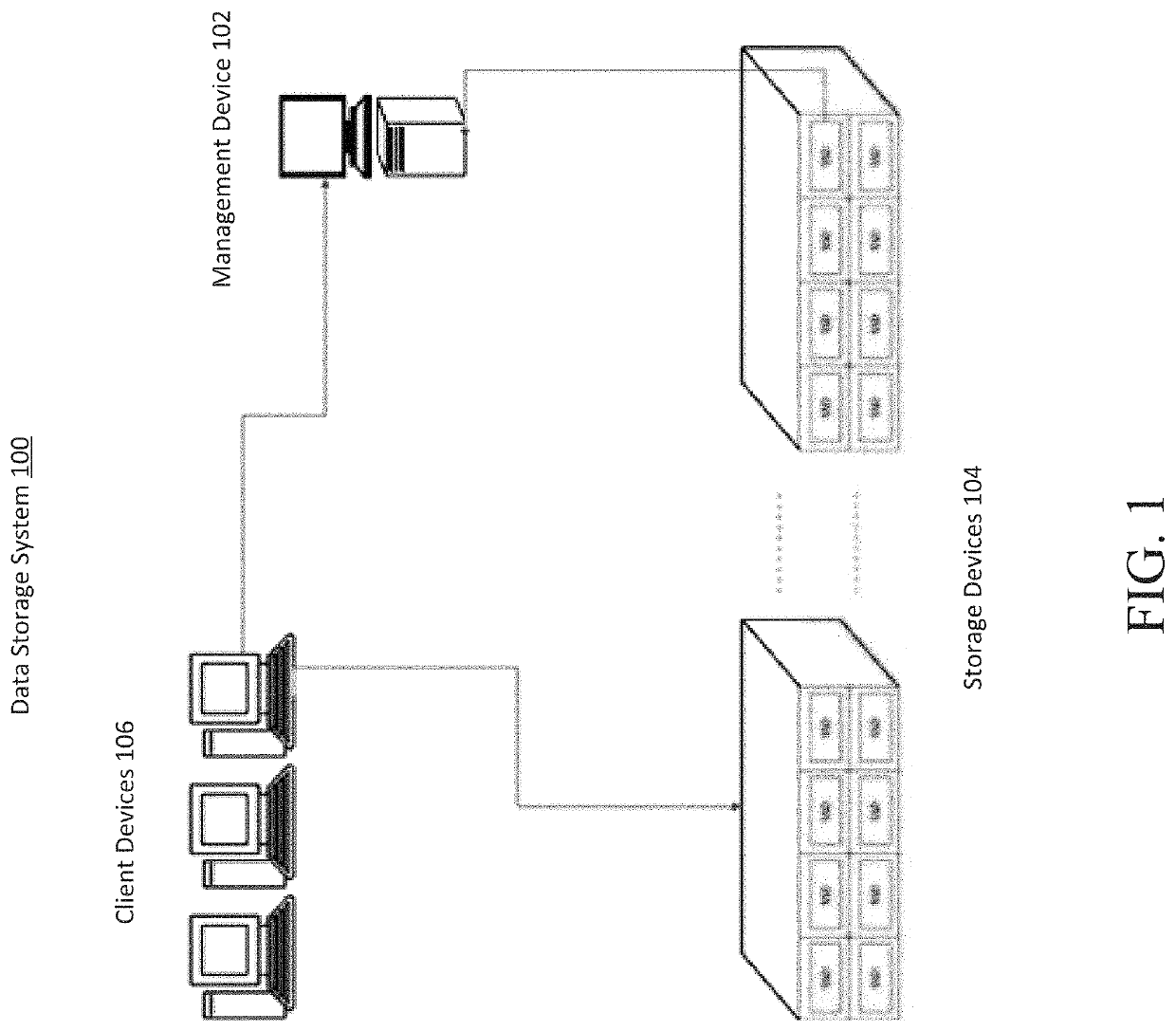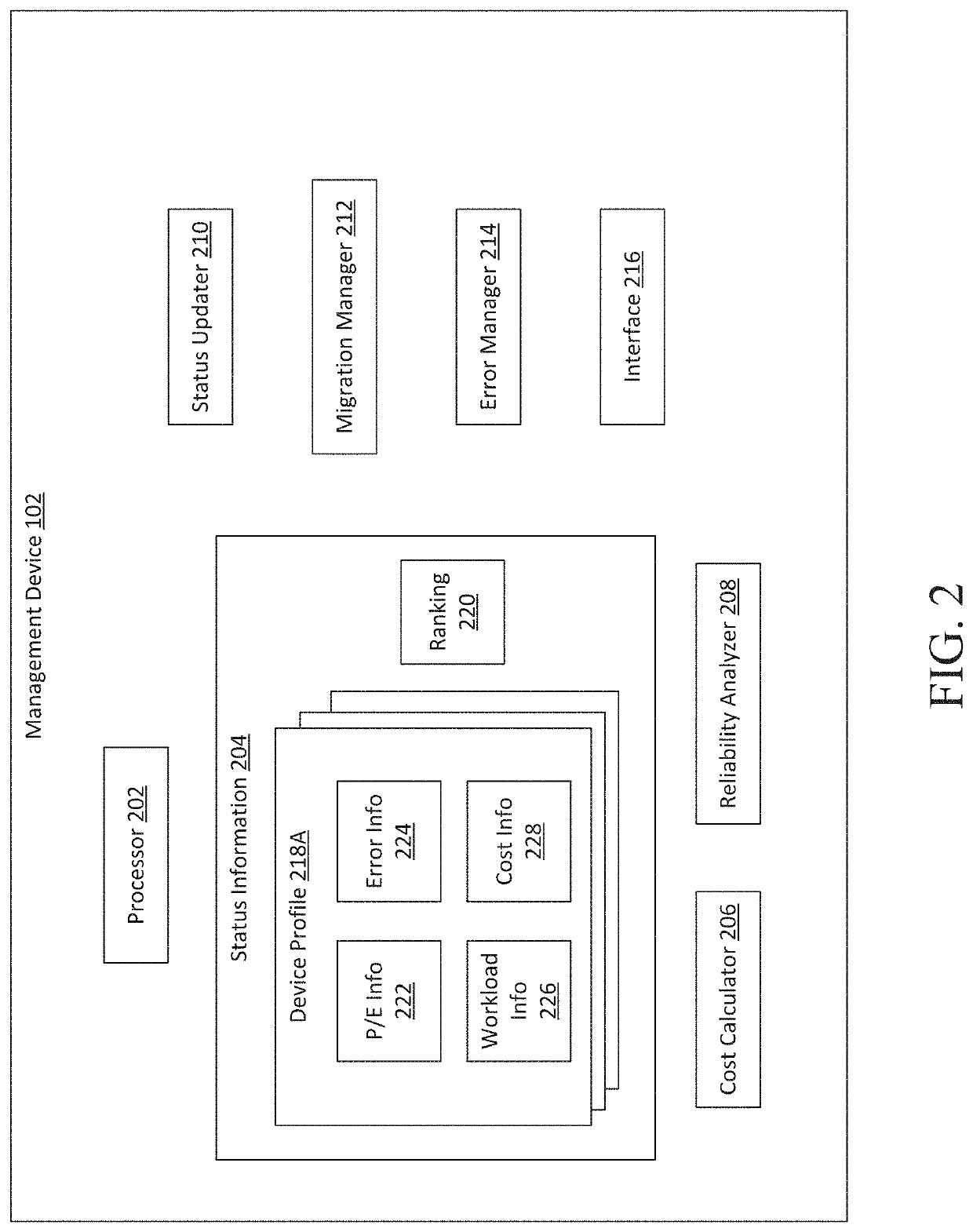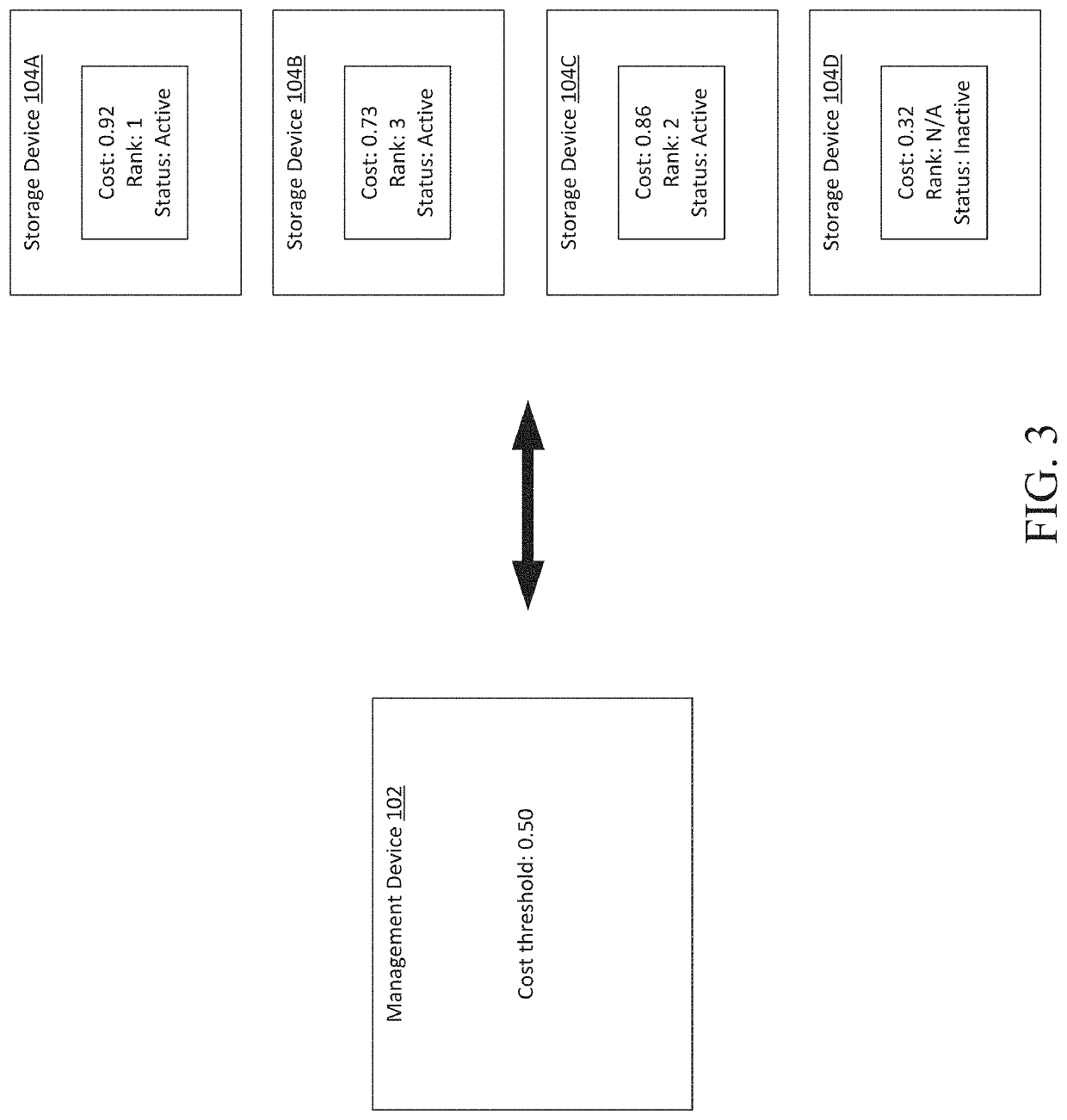Pool-level storage management
a storage management and pool technology, applied in the field of storage management systems and methods, can solve the problems of low performance requirements, failure to provide a storage system with many, and limited write capabilities of ssds, which may include nand memory, so as to improve density, power consumption and cooling, and reduce the remaining p/e capacity.
- Summary
- Abstract
- Description
- Claims
- Application Information
AI Technical Summary
Benefits of technology
Problems solved by technology
Method used
Image
Examples
Embodiment Construction
[0021]The embodiments described herein provide for certain improvements to devices or methods for a data storage system. One or more of the embodiments described herein implement low-cost expired SSDs or SSDs with low remaining P / E capacity. Certain issues with SSDs, such as data corruption and risk of drive failure, can be mitigated or solved using the devices or methods described herein, which include management devices configured to perform improved selection of SSDs for archiving new data or for migrating existing (possibly error-corrected) data. The improved selection may be based on a cost function that accounts for characteristics of candidate SSDs included in a pool of SSDs being managed by the management device. The management device may also flag and / or remove SSDs that are unreliable (e.g. as evidenced by a cost of the unreliable device being at, above, or below a cost threshold).
[0022]FIG. 1 shows an overview of an example data storage system 100 according to embodiments...
PUM
 Login to View More
Login to View More Abstract
Description
Claims
Application Information
 Login to View More
Login to View More - R&D
- Intellectual Property
- Life Sciences
- Materials
- Tech Scout
- Unparalleled Data Quality
- Higher Quality Content
- 60% Fewer Hallucinations
Browse by: Latest US Patents, China's latest patents, Technical Efficacy Thesaurus, Application Domain, Technology Topic, Popular Technical Reports.
© 2025 PatSnap. All rights reserved.Legal|Privacy policy|Modern Slavery Act Transparency Statement|Sitemap|About US| Contact US: help@patsnap.com



